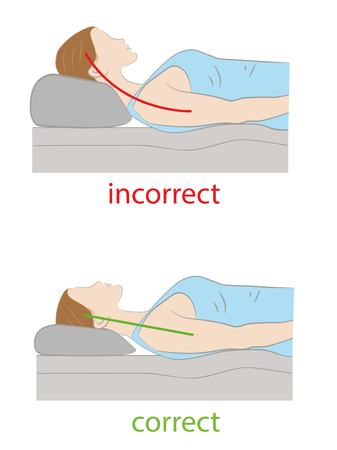Introduction to Male Body Contouring in the UK
The landscape of male aesthetics in Britain has undergone a significant transformation over recent years, with body contouring emerging as a sought-after solution for men seeking to refine their physique. This surge in popularity reflects shifting social attitudes, where British men are increasingly embracing cosmetic enhancements not just for vanity, but also for personal confidence and wellbeing. Influences from popular culture, the impact of social media, and the growing focus on health and self-care have all contributed to this trend. The UK market is particularly unique due to its blend of traditional values and progressive attitudes towards male grooming, resulting in a discerning clientele who value both natural results and medical safety. As demand continues to rise, clinics across major British cities are expanding their offerings, tailoring services to meet the specific needs and expectations of men in the UK. This overview sets the stage for a deeper exploration into the science, techniques, and technologies driving this evolution in male body contouring.
2. The Science of Fat Reduction and Body Sculpting
The success of male body contouring relies on a deep understanding of the physiological mechanisms that govern fat distribution, metabolism, and the influence of genetics. Unlike female patients, men typically accumulate fat in specific areas such as the abdomen, flanks, and chest. This is primarily due to differences in hormonal profiles, particularly testosterone, which dictates where and how fat is stored and mobilised within the body.
Fat Distribution Patterns in Men
Adipose tissue—commonly referred to as body fat—plays a crucial role in shaping the male physique. Men tend to have higher visceral fat deposits compared to women, meaning more fat is stored around internal organs rather than just beneath the skin (subcutaneous fat). This pattern not only affects aesthetics but also has important health implications, as higher visceral fat is associated with increased metabolic risk.
| Fat Type | Typical Location in Men | Clinical Implications |
|---|---|---|
| Visceral Fat | Abdomen, around organs | Higher metabolic risk; more challenging to target with non-surgical methods |
| Subcutaneous Fat | Flanks, lower abdomen, chest | More responsive to targeted treatments like liposuction or cryolipolysis |
The Role of Metabolism in Body Contouring
Metabolism refers to the bodys process of converting food into energy and breaking down stored fat. In men, resting metabolic rate (RMR) is generally higher than in women due to greater muscle mass, but this can decrease with age or sedentary lifestyles. Modern body contouring techniques often aim to exploit these metabolic processes by selectively destroying fat cells—either through physical removal or by triggering their breakdown—while preserving surrounding tissues.
Genetic Factors Affecting Male Body Contouring Outcomes
Genetics play an undeniable role in determining how and where men store fat. Some men may struggle with stubborn love handles or gynecomastia (enlarged male breast tissue) regardless of diet or exercise efforts. These genetic predispositions mean that tailored approaches are essential for effective results. Technologies available in Britain are designed to address these unique challenges by offering customisable treatment plans based on individual physiology.
Key Takeaways for British Patients
- Targeted Approach: Understanding individual fat distribution helps select appropriate technologies.
- Holistic Assessment: Comprehensive evaluation including genetic background improves outcomes.
- Cultural Relevance: Awareness of typical British male physiques informs better treatment planning and realistic expectations.
This scientific foundation ensures that male body contouring procedures carried out in Britain are both safe and effective, delivering personalised results aligned with each patient’s physiological makeup and aesthetic goals.

3. Non-Surgical Techniques Available in Britain
Non-surgical body contouring has surged in popularity across the UK, with men increasingly seeking minimally invasive methods to achieve a sculpted physique without the downtime or risks associated with surgery. The science behind these treatments lies in targeted energy technologies that disrupt fat cells, leading to gradual and natural-looking improvements.
Cryolipolysis: Fat Freezing Technology
Cryolipolysis, widely recognised by the brand name CoolSculpting, is one of the most sought-after non-invasive fat reduction options available in Britain. This technology works by cooling fat cells to a temperature that causes apoptosis (cell death), while leaving surrounding tissue unharmed. Over several weeks, the body naturally processes and eliminates the dead fat cells. Reputable clinics such as The Cosmetic Skin Clinic in London and Manchester offer CoolSculpting, catering to men looking for targeted fat reduction on areas like the abdomen and flanks without surgery or anaesthesia.
Laser Lipolysis: Precision Fat Targeting
Laser lipolysis utilises controlled laser energy to disrupt fat cells beneath the skin’s surface. SculpSure is a prominent brand providing this service in UK aesthetic clinics such as sk:n and Harley Medical Group. This technique is praised for its ability to treat stubborn pockets of fat in just 25 minutes per session, with minimal discomfort and no required recovery time. Laser lipolysis appeals particularly to busy professionals looking for a lunchtime procedure with scientifically backed results.
Radiofrequency Devices: Skin Tightening & Fat Reduction
Radiofrequency (RF) devices, such as BTL Exilis and Accent Prime, combine heat energy with ultrasound or radiofrequency waves to both destroy fat cells and stimulate collagen production. Clinics throughout Britain now offer these treatments, which are especially effective for men seeking mild-to-moderate contouring along with improved skin tightness. Aesthetic centres like EF MEDISPA and Courthouse Clinics provide bespoke RF-based plans tailored for male patients who want a comprehensive approach to body shaping without needles or incisions.
Choosing the Right Clinic and Technology
With a range of scientifically validated technologies available, selecting an established clinic with experienced practitioners is paramount for safety and efficacy. Most reputable British clinics conduct thorough consultations to determine patient suitability and set realistic expectations based on individual goals. As trends continue towards less invasive solutions, non-surgical body contouring remains at the forefront of male aesthetic innovation in the UK.
Surgical Solutions: Liposuction and Body Implants
In the realm of male body contouring, surgical interventions remain a cornerstone for those seeking more dramatic or permanent results. The two most prevalent options in Britain are liposuction and body implants. Both procedures have evolved significantly, integrating advanced technology to enhance safety and outcomes, while remaining under strict regulatory scrutiny to protect patient wellbeing.
Liposuction: Traditional and Advanced Techniques
Liposuction has long been the gold standard for targeted fat removal. In the UK, conventional suction-assisted liposuction (SAL) is still widely performed; however, newer modalities such as VASER (ultrasound-assisted), laser-assisted lipolysis, and power-assisted liposuction are increasingly popular. These advanced techniques offer increased precision, reduced downtime, and potentially smoother results—attributes highly valued by British men looking for subtle yet effective enhancement.
Comparison of Liposuction Methods in the UK
| Technique | Key Features | Typical Recovery Time |
|---|---|---|
| SAL (Suction-Assisted) | Manual fat removal; tried and tested method | 1-2 weeks |
| VASER | Uses ultrasound energy for selective fat targeting | 3-7 days |
| Laser-Assisted | Melts fat with laser before extraction; promotes skin tightening | 5-10 days |
Body Implants: Sculpting Masculine Contours
For individuals aiming to augment muscle definition where exercise falls short, body implants such as pectoral, calf, or gluteal implants offer a solution. These silicone-based devices are surgically placed to mimic natural musculature, providing a tailored look that aligns with modern British aesthetics—discreet yet impactful.
Regulatory Aspects in the UK
The United Kingdom maintains stringent regulations for cosmetic surgery. All surgical body contouring procedures must be performed by practitioners registered with the General Medical Council (GMC). Facilities must also be regulated by the Care Quality Commission (CQC). The table below highlights key practitioner qualifications required in the UK:
| Requirement | Description |
|---|---|
| GMC Registration | Mandatory for all surgeons performing cosmetic procedures |
| CQC-Regulated Facility | Surgery must occur in approved clinics or hospitals |
| Specialist Training | Surgeons should hold accreditation in plastic or aesthetic surgery from recognised bodies such as BAAPS or BAPRAS |
Choosing Your Practitioner Wisely
Given the complexity and potential risks of surgical body contouring, British patients are advised to verify credentials and seek consultations with reputable specialists. This not only ensures compliance with regulatory standards but also significantly improves safety and satisfaction outcomes.
5. Technological Innovations in UK Aesthetics
The landscape of male body contouring in Britain has evolved dramatically, driven by rapid advancements in medical aesthetics technology. British clinics are at the forefront of adopting cutting-edge solutions, reflecting the nation’s commitment to safe, precise, and minimally invasive procedures. One of the most notable breakthroughs is high-definition liposculpture, a refined form of traditional liposuction that leverages advanced cannulas and meticulous techniques to sculpt more athletic and natural-looking physiques. This approach enables surgeons to highlight muscle definition—particularly popular among men seeking a chiselled, masculine appearance.
Alongside high-definition liposculpture, energy-based devices are reshaping expectations in the industry. Technologies such as radiofrequency-assisted lipolysis (e.g., BodyTite) and laser-assisted lipolysis (e.g., SmartLipo) harness heat energy to liquefy fat and stimulate collagen production, resulting in skin tightening alongside fat reduction. These innovations offer significant advantages: reduced downtime, enhanced comfort during recovery, and improved precision when targeting stubborn fat deposits.
Non-surgical modalities are also gaining traction across the UK, responding to the modern man’s preference for discreet treatments with minimal interruption to daily life. Cryolipolysis (commonly known as fat freezing) utilises controlled cooling to target and eliminate fat cells without incisions or anaesthesia—a trend particularly popular in metropolitan centres like London and Manchester. Similarly, electromagnetic muscle stimulation devices are being integrated into holistic body contouring plans, offering muscle toning benefits previously achievable only through rigorous exercise.
It’s important to note that all these technological advances are governed by stringent UK regulations, ensuring patient safety remains paramount. Leading practitioners undergo continuous training and adhere closely to guidelines set forth by bodies such as the Care Quality Commission (CQC). This regulatory environment has fostered an atmosphere of trust and innovation, allowing British men access to world-class aesthetic care tailored specifically to their needs.
6. Key Considerations and Cultural Attitudes
When exploring male body contouring in Britain, it is crucial to analyse the unique cultural attitudes and key considerations that shape British mens decisions regarding aesthetic treatments. While cosmetic procedures have traditionally been perceived as a female domain, recent years have witnessed a subtle yet notable shift. British men are increasingly open to body contouring, but societal expectations often dictate a discreet approach, with an emphasis on natural-looking results and maintaining traditional masculinity.
Awareness of Risks and Informed Consent
British patients tend to be particularly risk-aware, valuing transparency about potential complications and long-term outcomes. Clinics operating in the UK are held to rigorous standards for patient education and informed consent, ensuring that individuals fully understand both the benefits and limitations of each technique. This cautious approach is further reinforced by the UKs robust regulatory environment, which prioritises patient safety above all else.
Aftercare Expectations
Aftercare is another significant consideration for UK patients. There is an expectation of comprehensive post-procedure support, including access to follow-up consultations, clear aftercare instructions, and swift intervention in case of complications. British clinics are therefore well-versed in providing tailored aftercare plans designed to promote optimal healing and minimise downtime—factors that heavily influence patient satisfaction and overall perception of value.
Regulatory Landscape in the UK
The UKs regulatory framework for aesthetic treatments is among the most stringent globally. Practitioners must comply with guidelines set out by bodies such as the Care Quality Commission (CQC) and the General Medical Council (GMC). These regulations not only ensure practitioner competence but also uphold ethical marketing practices—a critical factor in protecting patients from misleading claims or underqualified providers.
In summary, any consideration of male body contouring in Britain must take into account the prevailing cultural attitudes towards masculinity and aesthetics, the high value placed on risk awareness and aftercare, and the role of strict regulatory oversight in safeguarding patient welfare. Understanding these factors enables prospective patients to make informed choices while fostering trust between practitioners and their clientele.
7. Future Trends in Male Body Contouring across Britain
The landscape of male body contouring in Britain is rapidly evolving, driven by advances in technology, shifting societal values, and a broader approach to holistic health. As more men seek personalised solutions for their aesthetic goals, several key trends are emerging that will shape the future of this field.
Holistic Health Integration
Increasingly, clinics across the UK are adopting a more comprehensive approach that goes beyond physical appearance. There is a growing emphasis on integrating nutritional advice, mental wellbeing support, and lifestyle management into body contouring programmes. This holistic model recognises that optimal results come from combining advanced techniques with ongoing health education, ensuring sustainable outcomes for clients.
Digital Consultations and Remote Care
The digital transformation of healthcare has also touched the aesthetics sector. Virtual consultations have become commonplace, enabling men to access expert advice regardless of location. British practitioners are leveraging secure telemedicine platforms for pre-treatment assessments and post-procedure follow-ups, improving convenience while maintaining high standards of care. This trend is expected to continue as digital literacy increases and patient expectations shift towards greater flexibility.
The Evolving Standard of Male Beauty
In the UK, perceptions of masculinity and beauty are undergoing significant change. The traditional ideals are giving way to a more diverse and inclusive understanding of male aesthetics. Men are now more open about their desires for body enhancement and wellness interventions, leading to increased demand for subtle yet effective treatments. The focus is shifting from dramatic transformations to natural-looking improvements that align with individual identities and lifestyles.
Embracing Innovation Responsibly
British clinics remain at the forefront of adopting new technologies—such as AI-assisted body analysis and minimally invasive procedures—but with a strong emphasis on patient safety and ethical standards. Regulatory bodies in the UK continue to play a vital role in ensuring that only evidence-based practices are implemented.
Conclusion: The Road Ahead
As science and society progress hand-in-hand, male body contouring in Britain is set to become more personalised, accessible, and attuned to holistic wellbeing. By embracing emerging trends while upholding rigorous standards, the industry promises a future where mens health and confidence are supported both inside and out.


